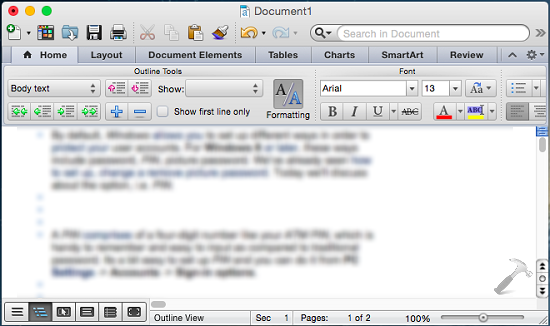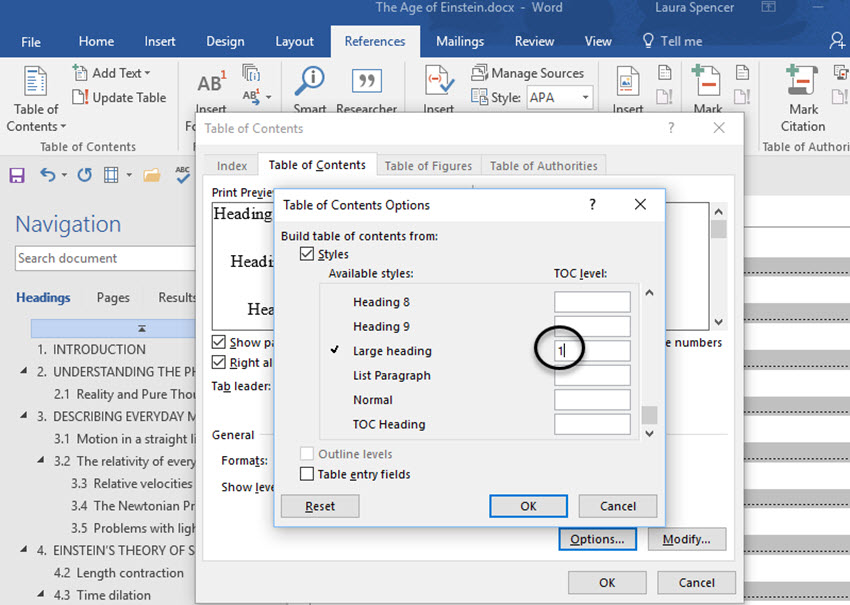
Parents are to be printing forms at home from a website, and they are confused when the printed piece is so disjointed, too many pages and doesn't look like it did onscreen.

Perhaps I've done an injustice calling this phenomenon by the incorrect name, but it still remains problematic as it causes a tight, one-page form to print on two pages (sometimes 3 or 4, depending on how many times and in what location they've added a return). You can see the black cursor justified left under Name, to me, indicating a new "row", blank space, whatever it should be called. This second screenshot is after I add a return after the Name field. The screenshot below is before I add a return to the cell containing the Name field.

With gridlines turned on, the return deepens the cell by a line, but does not alter the text field within the same cell. The return did not disappear and was not replaced by Then, as suggested, I selected Word > Preferences > View > Field Codes. I clicked after a text field and entered a Return. Thank you so much for diligently trying to help! I appreciate your kindness and expertise. That does not prevent the user from entering extra lines, but it does prevent the extra text from appearing. If you cannot use macros, I suspect that the best you can do is set the relevant rows in your table to a fixed height. For each form field you need to check, you would edit the field's properties and specify the macro under "Run macro on Exit" You would probably nee to put this macro in the template that your forms are generated from. S = Replace(s, vbVerticalTab, "") ' resulting from a hard newlineĪctiveDocument.FormFields(Selection.Bookmarks(1).Name).Result = s S = Replace(s, vbCr, "") ' resulting from Enter ' replace anything that causes spill onto more than one line. S = ActiveDocument.FormFields(Selection.Bookmarks(1).Name.Result (For others here, I thought it might be possible to combine key 63 with the wdKeyReturn key, but that fails).Īnother possibility would be to strip characters such as CR from the string.
SHOW CURSUR LOCATION IN MICROSOFT WORD FOR MAC 2011 HOW TO
These macros will work on Mac Word 2011,īut unfortunately, they do not also disable the fn-Enter key, and right now I cannot see how to do so. Microsoft describes a set of macros at to re-assign the Enter key. If so, I do not know how to stop that on Mac Word. It seems to be an issue with documents I've got from elsewhere, quite possibly from other operating systems.I can't reproduce as stated either, and think the user is probably adding a new line into the field. It doesn't appear to be a problem on documents created locally. This helps a little in my frustration, but the behavior really needs fixed. I've since changed the blink rate to 200ms via changing the default in Word's plist file. I think that it stays in whichever state it was last in, which 50% of the time is invisible. As I write this post and keep going back to word I'm noticing that it seems erratic as to what behavior it's acting.

This makes it painfully difficult to edit text without using the mouse. However, in Word 2011 I'm constantly frustrated because the cursor disappears, or defaults to the invisible state of the flashing sequence, while I'm typing or moving it. It then goes to the flashing sequence once you stop moving it with arrow keys or typing. The text cursor, or caret, is normally in the visible form in applications at the start of its display cycle.


 0 kommentar(er)
0 kommentar(er)
